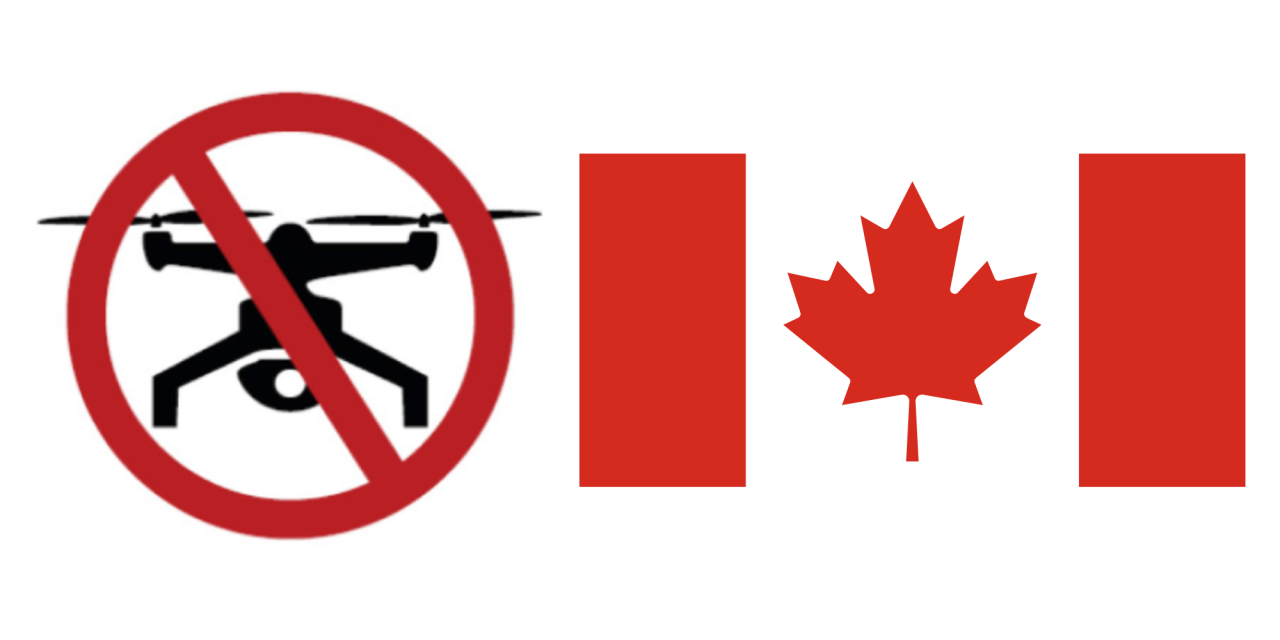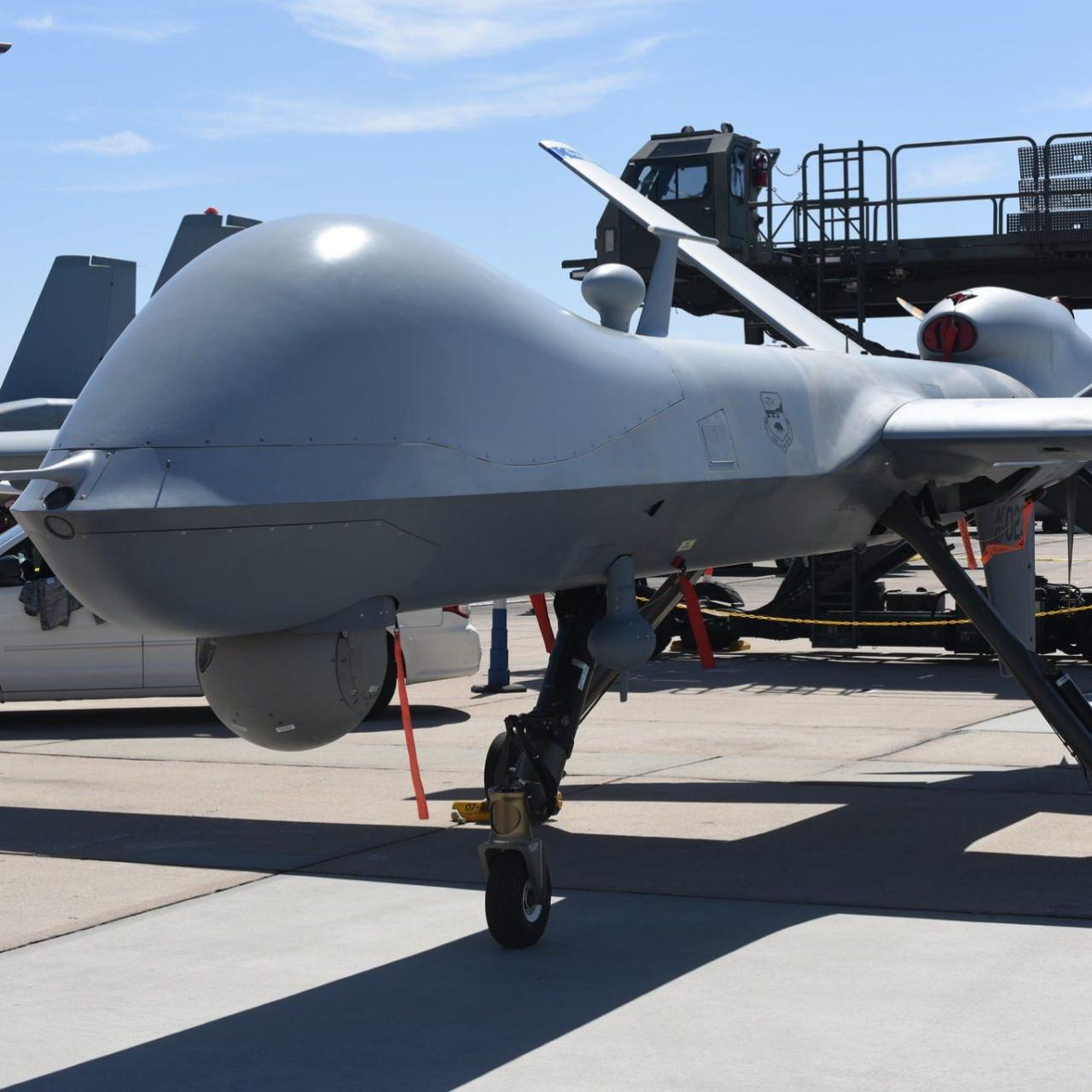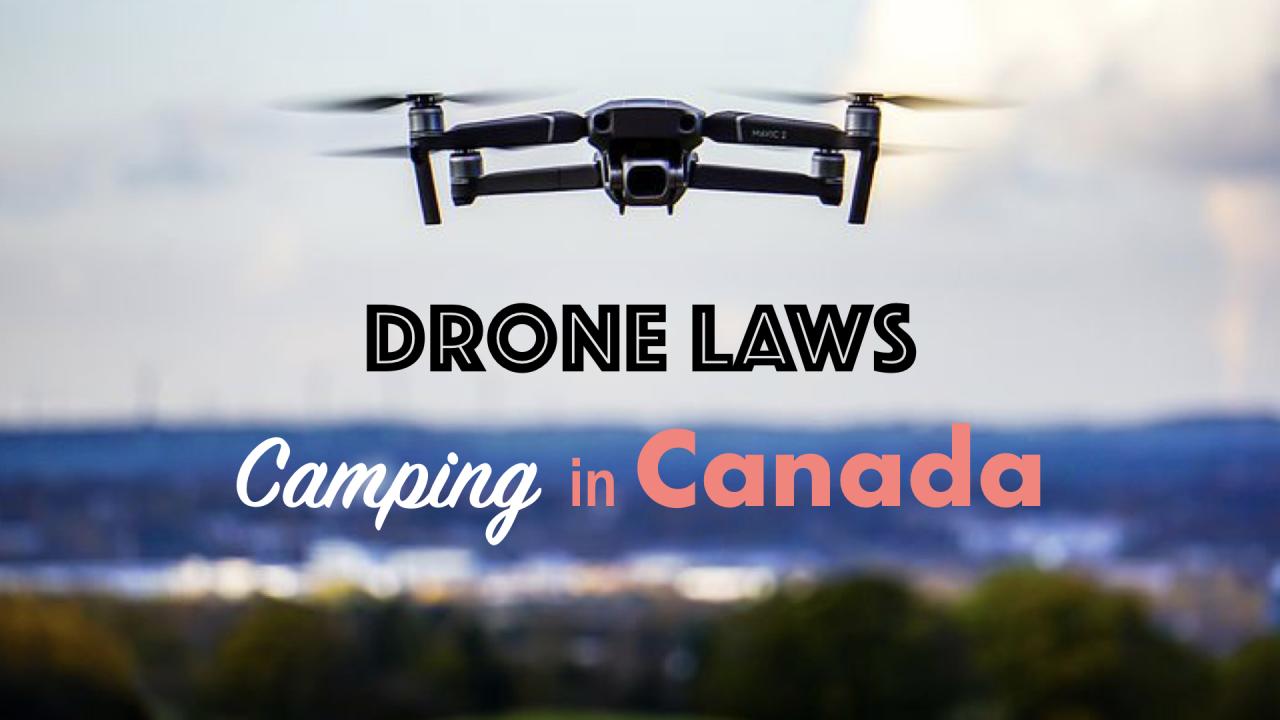New Drone Rules Canada: Navigating the updated regulations for drone operation in Canada can feel overwhelming, but understanding the changes is crucial for safe and legal flight. This guide breaks down the key aspects of the new rules, covering everything from registration and licensing to operational restrictions and the impact on commercial drone use. Whether you’re a recreational flyer or a commercial operator, staying informed is key to avoiding penalties and ensuring responsible drone use.
This guide aims to demystify the complexities of Canada’s new drone regulations. We’ll explore the rationale behind the updated rules, delve into specific requirements for different drone categories, and offer practical advice for safe and compliant operation. We’ll also look at the future of drone regulations in Canada and how technological advancements are shaping the landscape.
Overview of New Drone Regulations in Canada
Canada’s drone regulations have undergone significant changes to enhance safety and responsible operation. These updated rules categorize drones, clarify operational limits, and establish a clearer licensing framework. The changes aim to balance the growing popularity of drone technology with the need to mitigate potential risks to public safety and privacy.
Key Changes in Canadian Drone Regulations
Key changes include stricter registration requirements, clearer definitions of operational limitations based on drone weight and capabilities, and a more robust licensing system for commercial operators. The rules also emphasize maintaining visual line of sight (VLOS) and respecting airspace restrictions. Penalties for non-compliance have also been strengthened.
Drone Categories Affected

The new regulations affect all drones, regardless of size or intended use, although the specific requirements vary based on weight and operational intent (recreational or commercial). Drones exceeding a certain weight limit face stricter operational guidelines and licensing requirements. Micro-drones, typically under a certain weight threshold, may have less stringent requirements, but still require registration.
Rationale for Updated Regulations, New drone rules canada
The updated regulations reflect the increasing number of drone incidents and the need for a more comprehensive framework to ensure public safety and responsible drone operation. The government aims to create a balance between fostering innovation in the drone industry and mitigating risks associated with irresponsible or unsafe use. The increased clarity and structure are intended to facilitate easier compliance and better enforcement.
Drone Registration and Licensing Requirements
Registering your drone and obtaining the appropriate license are crucial steps for legal and safe operation in Canada. The process varies depending on the type of drone and intended use.
Drone Registration Process
Drone registration in Canada typically involves providing details about the drone and the owner through Transport Canada’s online system. This process assigns a unique registration number that must be clearly displayed on the drone. Failure to register can result in significant penalties.
Drone License Types and Requirements
Canada differentiates between recreational and commercial drone licenses. Recreational pilots generally need to complete an online safety course and register their drone. Commercial pilots face more stringent requirements, including advanced training, operational tests, and background checks. Specific requirements vary depending on the drone’s weight class and operational complexity.
Comparison of Recreational and Commercial Licensing
Recreational drone use requires registration and completion of a basic safety course, while commercial use necessitates a more rigorous licensing process, including practical examinations and adherence to stricter operational standards. Commercial operators also face more stringent requirements regarding insurance and operational safety protocols.
Drone Registration and Licensing Fees
The fees associated with drone registration and licensing are subject to change, but generally, recreational registration is relatively inexpensive, while commercial licensing involves a more substantial fee. These fees cover the administrative costs of the licensing process and contribute to ongoing safety and enforcement initiatives.
| License Type | Registration Fee | Licensing Fee | Other Costs |
|---|---|---|---|
| Recreational | $5 – $10 (estimated) | N/A | Safety Course Fee (Variable) |
| Commercial – Basic | $5 – $10 (estimated) | $100 – $300 (estimated) | Training, Exam Fees (Variable) |
| Commercial – Advanced | $5 – $10 (estimated) | $300 – $500+ (estimated) | Training, Exam Fees, Advanced Certifications (Variable) |
Operational Restrictions and Safety Guidelines
Safe and legal drone operation requires awareness of geographical restrictions and adherence to established safety protocols. Understanding these aspects is vital for preventing accidents and legal repercussions.
Restricted and Prohibited Areas
Drone operation is restricted or prohibited near airports, military installations, and other sensitive areas. Flying over crowds, private property without permission, and operating beyond visual line of sight (VLOS) are also typically prohibited. Specific restrictions vary depending on the location and airspace regulations.
Best Practices for Safe Drone Operation
Maintaining VLOS is paramount. Operators should always be aware of their surroundings and avoid obstacles. Respecting privacy is crucial, avoiding filming or photographing people without their consent. Regularly checking weather conditions and ensuring the drone is in good working order are also vital safety measures.
Penalties for Violating Drone Regulations
Violating drone regulations can result in fines, drone seizure, and even criminal charges depending on the severity of the violation. These penalties aim to deter unsafe and irresponsible drone operation and maintain public safety.
Decision-Making Flowchart for Legal Drone Operation
A flowchart would visually guide users through a series of questions, such as: Is the drone registered? Is the operator licensed (if required)? Is the flight area restricted? Is VLOS maintained? Is privacy respected?
Each “yes/no” answer would lead to the next question, ultimately concluding whether the operation is legal or not. (A visual flowchart would be included here in a full article.)
Impact on Commercial Drone Operations

The new regulations significantly impact businesses utilizing drones for commercial purposes. Understanding these impacts is vital for businesses to adapt and comply.
Effect on Commercial Drone Businesses
The regulations increase the cost of entry for commercial drone operations due to licensing fees and training requirements. However, they also provide a more structured and predictable regulatory environment, fostering greater trust and acceptance of commercial drone services. This clarity can potentially lead to increased market opportunities.
Implications for Various Industries
Industries like agriculture (crop monitoring), construction (site surveying), and filmmaking (aerial cinematography) are heavily reliant on drone technology. The new regulations necessitate adjustments to operational procedures and potentially increased operational costs, but also offer a framework for safe and responsible integration of drones into these industries.
Comparison with International Regulations
Comparing Canadian regulations with those of other countries (e.g., the USA, EU) reveals similarities and differences in licensing requirements, operational restrictions, and enforcement mechanisms. Some countries have a more relaxed approach to recreational drone use, while others have stricter rules for commercial operations. A detailed comparison would require a more extensive analysis.
Challenges and Opportunities for Commercial Operators
Challenges include the cost of compliance, the need for specialized training, and navigating complex regulatory requirements. Opportunities include increased market demand for safe and reliable drone services, a more standardized operating environment, and the potential for technological advancements to enhance efficiency and safety.
Technological Advancements and Drone Regulations

Rapid technological advancements in drone technology necessitate ongoing adaptation of regulatory frameworks. This section explores the interplay between technology and regulation.
Influence of Technological Advancements
Autonomous flight capabilities, beyond visual line of sight (BVLOS) operations, and advanced drone sensor technologies present both opportunities and challenges for regulators. BVLOS operations, for example, require robust safety systems and sophisticated communication protocols, demanding new regulatory considerations.
Challenges in Adapting Regulations
Keeping pace with rapid technological change is a significant challenge. Regulations must be flexible enough to accommodate new technologies without compromising safety. This requires a collaborative approach between regulators, industry stakeholders, and technology developers.
So, Canada’s got some new drone rules, right? It’s all about safety and responsible flying. Think about the logistics involved, even for something like the Gonzaga basketball plane – imagine the airspace management needed for that! Understanding these new regulations is key for everyone, from hobbyists to professionals, to keep our skies safe and avoid any potential conflicts.
Regulations Addressing Emerging Technologies
Regulations are evolving to address technologies like drone detection systems, geofencing capabilities, and remote identification technologies. These technologies help mitigate risks associated with unauthorized drone operations and enhance airspace safety.
Public Awareness and Education
Effective public awareness and education initiatives are vital for promoting safe and responsible drone operation. This section explores various educational resources and communication strategies.
Initiatives for Public Education
Transport Canada and other organizations conduct public awareness campaigns, providing information on safe drone operation, regulatory requirements, and best practices. These campaigns utilize various channels, including websites, social media, and educational materials.
Resources for Drone Operators
Numerous resources are available online, including Transport Canada’s website, which provides comprehensive information on regulations, licensing, and safety guidelines. Industry associations and training organizations also offer valuable resources and courses.
Effective Communication Strategies
Effective communication strategies involve clear and concise messaging, targeted outreach to specific user groups (recreational vs. commercial), and the use of multiple communication channels to reach a broad audience. This ensures that information is easily accessible and understandable.
Frequently Asked Questions
- Q: Do I need to register my drone? A: Yes, most drones require registration in Canada.
- Q: What is the difference between recreational and commercial drone use? A: Recreational use is for personal enjoyment, while commercial use involves earning money or providing services.
- Q: What are the penalties for violating drone regulations? A: Penalties can range from fines to drone seizure and even criminal charges.
- Q: Where can I find more information about drone regulations? A: Consult Transport Canada’s website for comprehensive information.
- Q: Do I need a license to fly a drone recreationally? A: Generally, you need to register your drone and complete a safety course for recreational use.
Enforcement and Compliance
Effective enforcement mechanisms are essential for ensuring compliance with drone regulations. This section details the enforcement process and the role of Transport Canada.
Mechanisms for Enforcing Regulations
Enforcement involves a combination of proactive monitoring, public reporting mechanisms, and investigations into reported violations. Transport Canada utilizes various methods, including drone detection technologies and collaboration with law enforcement agencies.
Reporting Violations
The public plays a crucial role in reporting violations. Transport Canada provides channels for reporting unsafe or illegal drone operations, allowing for timely investigation and enforcement actions.
Role of Transport Canada
Transport Canada is the primary agency responsible for overseeing drone operations and ensuring compliance with regulations. They develop and update regulations, conduct enforcement activities, and provide educational resources.
Canada’s new drone rules are pretty comprehensive, covering everything from registration to flight restrictions. If you’re thinking about operating a drone near water, though, you might want to check out the capabilities of the magura v5 sea drone , a seriously cool piece of tech. Understanding these new regulations is key, no matter what type of drone you fly, to ensure you stay on the right side of the law.
Future Outlook for Drone Regulations in Canada
The regulatory landscape for drones in Canada is continuously evolving. This section explores potential future adjustments and the impact of emerging technologies.
Potential Future Adjustments
Future adjustments may focus on further clarifying regulations for BVLOS operations, integrating advanced drone technologies into the regulatory framework, and streamlining the licensing process for commercial operators. Specific adjustments will depend on technological advancements and operational experience.
Canada’s new drone rules are pretty comprehensive, covering everything from registration to airspace restrictions. It’s interesting to consider how these regulations might apply to autonomous systems like the innovative ukrainian sea drone , which raises questions about international waters and potential future applications. Ultimately, understanding these new Canadian rules is key for anyone operating drones, regardless of their intended use or location.
Impact of Emerging Technologies
Emerging technologies, such as autonomous drone swarms and AI-powered drone systems, will necessitate further regulatory considerations to ensure safety and address potential risks. Regulations will need to adapt to these advancements while promoting innovation.
Comparison with International Best Practices
Canada’s drone regulations are continuously compared to international best practices to identify areas for improvement and ensure that the framework remains effective and aligned with global standards. This ongoing assessment helps maintain a balanced approach to safety and innovation.
Final Review
Understanding and adhering to Canada’s new drone regulations is paramount for both safety and legal compliance. From registration and licensing to operational restrictions, this guide provides a comprehensive overview of the key changes. By staying informed and responsible, drone enthusiasts and commercial operators can contribute to a safe and thriving drone ecosystem in Canada. Remember to always prioritize safety and consult official Transport Canada resources for the most up-to-date information.
FAQ Summary: New Drone Rules Canada
What types of drones are affected by the new rules?
The new rules affect most drones, regardless of size or weight, with some exceptions for very small, hobbyist models. Check Transport Canada’s website for specifics.
How much does drone registration cost?
Registration fees vary depending on the type of drone and license required. Check the Transport Canada website for the most current fee schedule.
Where can I find a list of restricted airspace?
Transport Canada’s website and various mobile apps provide maps and information on restricted airspace in Canada. Always check before flying.
What happens if I violate drone regulations?
Penalties for violating drone regulations can range from fines to legal action. The severity of the penalty depends on the nature and severity of the violation.
Can I fly my drone at night?
Night flights are generally restricted unless you have specific authorization and meet additional safety requirements.
